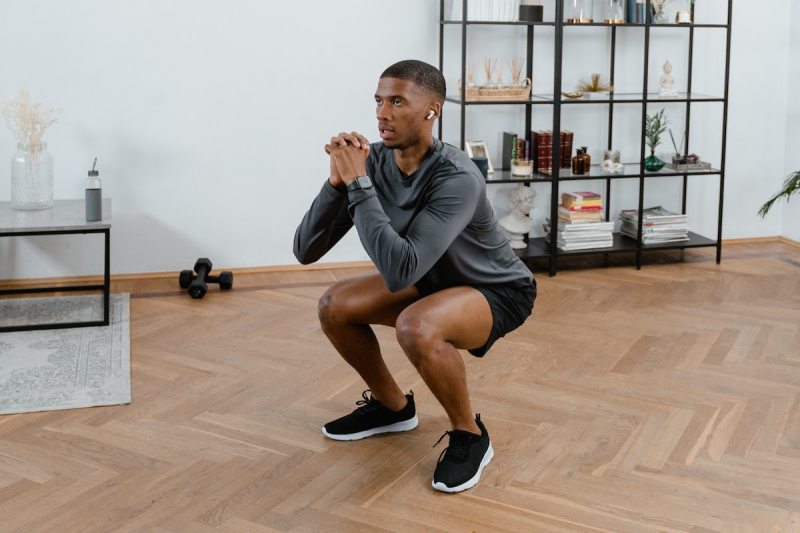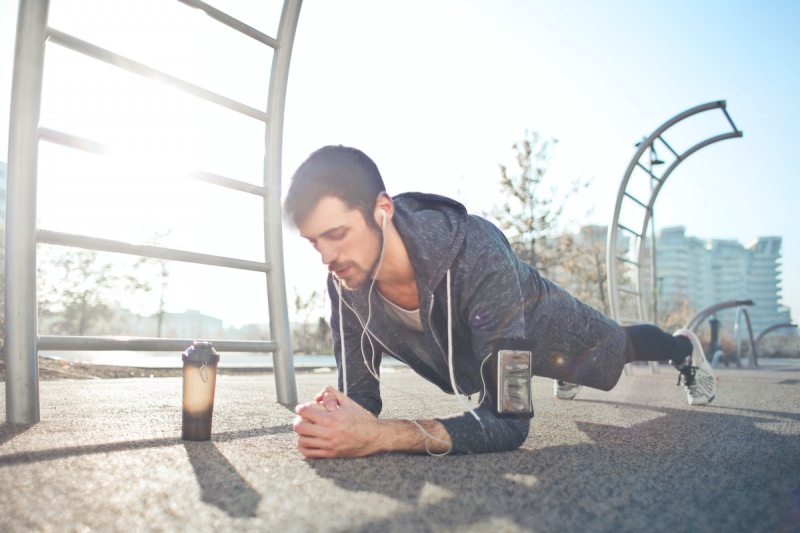
While it may not seem as strenuous as other, more intensive sports such as basketball and soccer, golf requires a lean and fit body in order to perform optimally. With famous professional golfers such as Tiger Woods and Jack Nicklaus, it’s no wonder why some people aspire to have bodies like theirs.
Whether you’re aiming to be a professional (or at least a frequent) golfer or you just want to have the physique of one, here are some ideas of how to get in “golf shape” in 30 days!
Important components of workouts for golfers

Mobility and flexibility
Flexibility is important for golfers to be able to swing the club by maintaining correct technical positions and technique to remain consistent and powerful between swings. The more flexible a golfer is, the less likely they’ll be to experience muscle aches or injuries when golfing.
On the other hand, mobility increases the body’s range of motion and movements. As with flexibility, having both a wider range of motion for your arms and stronger joints and tendons in your upper extremities can help you make stronger golf swings.
Core strength
A good golf swing relies on the adequate rotation of the body to make sure the swing has the right amount of power when the club hits the ball, and this all boils down to your core. Because golfing is an activity that can make it more likely to sustain minor injuries or muscle aches, a strong core can help avoid that by enabling you to maintain proper posture when you’re swinging the club.
Lean, toned muscle mass
Let’s get this out of the way right now: Bodybuilding serves no purpose in improving a golfer’s performance.
In terms of muscular strength, golfers focus more on toning their lean muscles than adding unnecessary amounts of bulk. It’s very important to maintain lean muscle mass as an athlete to achieve and maintain optimal performance. Aside from helping you put the right power into your swings, lean muscle mass also helps you move faster and maintain a wide range of motion.
How many days should I work out?

While working out every day doesn’t seem like such a bad thing, it can actually do more harm than good. Everyone’s body composition and needs are different, but three or four days a week — at around 30 minutes per day — is a good starting point when you’re creating your workout regimen and deciding how many days to work out.
Example workouts to get in golf shape

Remember that you aren’t trying to build muscle with heavy weights. You’re trying to maintain strong, lean muscle, so focus on more reps with smaller weights. As for warming up and cooling down, focus on improving your flexibility and mobility.
The following are some example workouts for you to follow or get some inspiration from to create your own routine.
Workout #1
This first workout has a stronger emphasis on maintaining lean muscle mass without neglecting other components of workouts for golfers. Do not try to use large barbells for these exercises; stick to 5–20 lb. dumbbells and/or medicine balls of equal weight.
Warm-up
Start by jogging at a very light pace for 5 to 10 minutes to begin warming up your muscles. Then, do two to three sets of pushups. Ten to 15 reps per set is recommended.
Exercises
- Squats (with either dumbbells or a medicine ball): 4 sets of 8 reps
- Bent-over dumbbell rows: 4–6 sets of 6–12 reps
- T-bar rows: 3–5 sets of 5–10 reps
- Hitch hikers: 3 sets of 10 reps
- Planks: 3–6 sets, 30 seconds per plank (Start with 10, relax for 10, then re-engage for 10)
Cooldown
Do as many arm circles in both directions as you are comfortable doing. Ten to 15 in each direction is a good starting point.
Workout #2
This next workout focuses on improving or developing mobility and flexibility without neglecting your lean muscles or core.
Warm-up
Start by jogging at a very light pace for 5 to 10 minutes to begin warming up your muscles. Then, do two to three sets of hip openers. Ten to 20 reps per set is recommended.
Exercises
- Hitch hikers: 3 sets of 10 reps
- Hip circles: 1 set of 20 reps in both directions
- Frog squats: 3 sets of 10 reps
- Pushups: 2–3 sets of 10–15 reps
- Planks: 3–6 sets, 30 seconds per plank (Start with 10, relax for 10, then re-engage for 10)
Cooldown
Walk for five to 10 minutes at a comfortable pace.
Workout #3
This routine workout focuses on strengthening your core while still helping to maintain flexibility and lean muscle mass. Some of these exercises will require a medicine ball for best results, but you can perform most of these even if you don’t have one.
Warm-up
Start by jogging at a very light pace for five to 10 minutes to begin warming up your muscles. Then, do five to 10 repetitions of thoracic rotations on each side.
Exercises
- Planks: 3–6 sets, 30 seconds per plank (Start with 10, relax for 10, then re-engage for 10)
- Oblique twists (medicine ball optional): 3 sets of 10–12 reps
- Squats (medicine ball optional): 3 sets of 12–15 reps
- Russian twists: 2–3 sets of 8–16 reps
- V-Sits: 20–25 reps
Cooldown
Do a series of stretches that target the full body. Hold each stretch for 20–30 seconds.
Other tips for getting in shape

Eat the right number of calories
Because both working out and playing golf can easily burn calories, you may need more calories than most. While dietary needs will vary between people, you should consume between 2,200 and 3,000 calories daily, with around half of those coming from carbohydrates. You may find yourself needing to consume fewer calories on the days you don’t exercise or golf.
Choose nutrient-dense foods
Nutrient-dense foods are rich in vitamins and minerals such as vitamin B12 and iron. Some examples include fruits and vegetables, whole grains (which can contribute to your high calorie count, as discussed above), unprocessed lean meats, and seafood. Including these kinds of foods in your diet can ensure that exercising does not lead to a deficiency in any nutrients.
Drink plenty of water
Experts have stated that maintaining proper hydration before, during, and after working out provides several benefits. It can reduce loss of fluid via sweating, heat stress, and exhaustion that can lead to heat stroke and a submaximal exercise heart rate. Thus, it’s extremely important to drink plenty of water if you plan to be physically active.
Prioritize rest and recovery
Trying to work out every day hinders your body’s ability to rest for the next time you exercise, so take a few days off to allow your body the rest it needs before your next session. Additionally, you should never push yourself to exercise if you don’t feel well; you may end up exacerbating the underlying issue.
Balance working and off days
It’s best to strike a balance when it comes to choosing what days to work out and what days to take a break. Aim for three or four days of working out, and then use the remaining days to focus on resting your body for the next session.
What results can I expect after 30 days?

Hypothetically, you can expect better mobility and flexibility, a stable core, and stronger lean muscle mass. Realistically speaking, however, results may vary depending on how consistent and disciplined you are with working out. Results may also vary depending on your body composition, meaning you may need more time (or, in some uncommon cases, less) to get the body you want.
Editors' Recommendations
- How (and why) parmesan, pecorino romano, gruyere, and asiago cheeses may help with digestive issues
- Pickleball paddles, shoes, and more: The best pickleball gifts you can get
- Beware the keto flu: What it is and how to keep it from ruining your keto diet
- Eggnog, sangria, and more: How to lower the calorie content of your favorite Christmas cocktails
- How to gain muscle and lose fat through body recomposition




